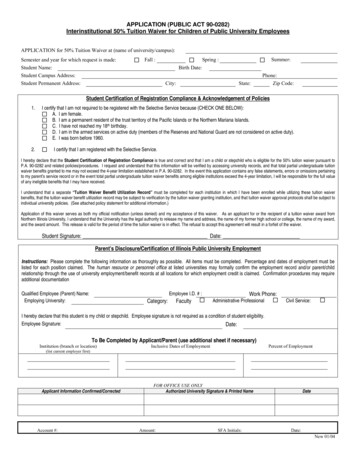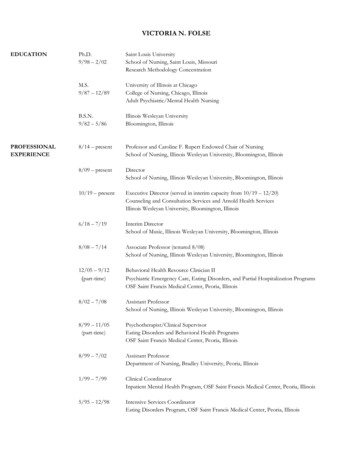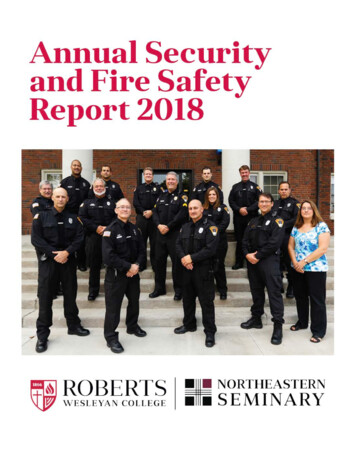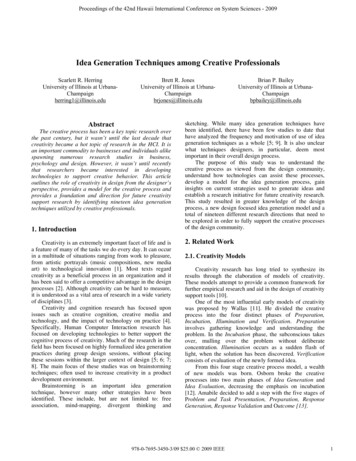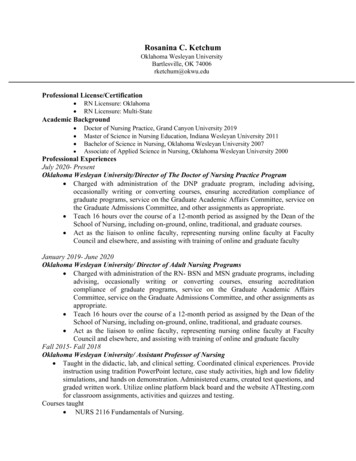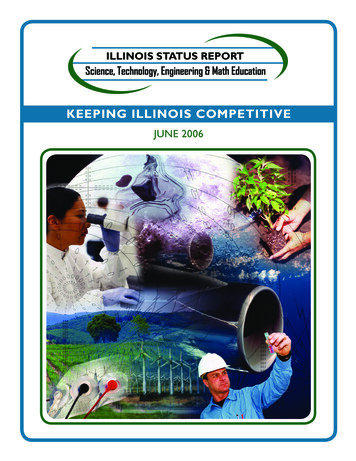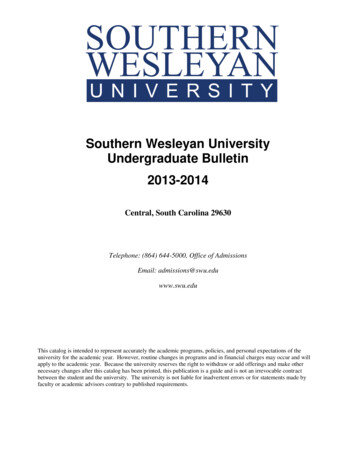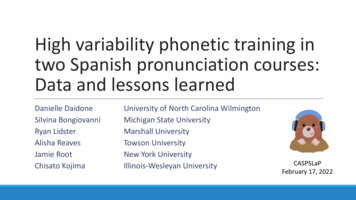
Transcription
High variability phonetic training intwo Spanish pronunciation courses:Data and lessons learnedDanielle DaidoneSilvina BongiovanniRyan LidsterAlisha ReavesJamie RootChisato KojimaUniversity of North Carolina WilmingtonMichigan State UniversityMarshall UniversityTowson UniversityNew York UniversityIllinois-Wesleyan UniversityCASPSLaPFebruary 17, 2022
High variability phonetic training High variability phonetic training (HVPT) is an effectivetool for learning non-native contrasts in a lab setting(Thomson, 2018) HVPT: Forced choice identification task (e.g. /l/ or /r/?) ordiscrimination task (e.g. same or different?) Listeners hear multiple voices Given feedback on their responses2
High variability phonetic training HVPT studies mainly limited to L2 English, only one sofar with L2 Spanish (see meta-analysis by Uchihara, Karas, &Thomson, 2021) Herd, Jongman, & Sereno (2013): Trained learners on /ɾ/-/r/, /ɾ/-/d/, and /r/-/d/ Forced choice task: hear [ˈka.ɾa], choose cara orcada Perceptual training group outperformed controlgroup overall3
High variability phonetic training Few studies have examined its efficacy outside a labsetting (Barriuso & Hayes-Harb, 2018) To our knowledge, none have looked at theeffectiveness of HVPT as a part of required coursework French, Japanese & Spanish4
Research QuestionsWhen HVPT is implemented as required coursework 1. Do students improve from pretest to posttest?2. Can they generalize to new words and new speakers?3. Do students see HVPT as useful for their learning?5
Methods6
ParticipantsStudents in 300-level Spanish pronunciation classes whoconsented to have their data used after the semester: UNCW: 11 MSU: 29Control group of 400-level advanced grammar studentswho received no explicit phonetic instruction but did allthe same HVPT pretest, training sessions, and posttests: MSU: 127
MethodContrasts: /ɾ/ vs. /r/ /ɾ/ vs. /d/ /e/ vs. /ei/ Stress g vs. gu caro vs. carrocoro vs. codoreno vs. reinotérmino vs. terminó (1 vs. 3)práctica vs. practica (1 vs. 2)aportara vs. aportará (2 vs. 3)agitar vs. *aguitarmanguera vs. *mangera8
MethodPretest (Baseline) In week 1 of semesterTraining A single training per contrast, trainings spaced throughout thesemester Had to reach 90% accuracy, or else repeat training Order of training differed between classesPosttests During finals week, divided into two tests: Trained words (Posttest 1) Generalization to new words (Posttest 2)9
StimuliRecorded by 6 speakers:Argentina (1 female), Spain (male and female), Cuba (maleand female), and Mexico (1 male)4 voices appeared in pretest and training:AR (female), MX (male), SP (female), CU (male)4 voices appeared in posttest, 2 new:AR (female), MX (male), SP (male), CU (female)10
StimuliPretest: 10 items per contrast (12 for stress) x 4 speakers x 5 contrasts 208 items total About 15 minTraining: 20 items (24 for stress) x 4 voices per training 80 items (96 forstress) About 5 minutes each, if no repeatsPosttests: Known words: 208 items (same as pretest, half new speakers) Generalization: 208 items (new words, half new speakers)11
12
Findings13
14
Similar patterns acrossinstruction groupsGains from baseline toPosttests/ɾ/-/d/ decline inperformance15
Mixed three-way ANOVA DV: Accuracy Within: Contrast,Session Between: GroupResults: Group Contrast, Session Contrast*Session16
Mixed three-way ANOVA DV: accuracy Within: Contrast,Session Between: GroupPairwise comparisons Baseline statisticallydifferent from Posttests(all contrasts) Posttests notstatistically differentfrom each other Except with /ɾ/-/r/(lower scores inPosttest 2)17
/ɾ/-/d/ Cline during training HVPT instructionshows betterperformance duringtraining. But, does not extendto Posttests18
/ɾ/-/d/ Also calculated d’ and c values to examine sensitivityand response biases. Hit, miss, false alarm, correct rejection./ɾ/ C response bias Zero c: no bias Positive c: bias towards /d/ Negative c: bias towards /ɾ/ɾd19
/ɾ/-/d/ Also calculated d’ and c values to examine sensitivityand response biases. Hit, miss, false alarm, correct rejection. C response bias Zero c: no bias Positive c: bias towards /d/ Negative c: bias towards /ɾ/Bias towards /d/No biasBias towards /ɾ/20
/ɾ/-/d/ Regardless of session, c is positive. They are biased to say /d/ Learners are more likely to bepresented with /ɾ/ and say /d/(miss) than the opposite (falsealarm) Bias decreases during training, butit was was not enough to reducebias at the time of Posttests.21
22
Posttest 1 Posttest 2 dataRM ANOVA DV: Accuracy Within: Contrast, Session,VoiceResults: VoiceContrastSessionContrast*Voice23
Posttest 1 Posttest 2 dataRM ANOVA DV: Accuracy Within: Contrast, Session,VoicePairwise comparison New is better than old No statisticaldifference with g -/x g/ and stress24
Student impressionsFor UNCW: 8 out of 11strongly agreed HVPT wasuseful, 1 agree, 2 disagree“The online HVPT training is beneficial!! It allowed me to hear native speakers'pronunciation of the words and also hear the differences between words that lookedsimilar. It really helped me learn this semester & I definitely think you shouldincorporate it in your classes in the future!”“mientras los entrenamientos de percepcion son muy util, completandolos fuefrustrante para mi. ademas no me gusta que puede oir cada palabra un tiempo”“This is the first Spanish course I've taken that uses this kind of perception training. Allof my courses in the past have focused primarily on grammar and vocabulary, so theHVPT training definitely did a lot more for my listening skills and pronunciation thanany other course I've taken.”25
Discussion26
Back to RQs RQ1: Do students improve from pretest (baseline) toposttest? For the most part, yes! Except tap-d :( (we’ll come back to this contrast) RQ2: Can they generalize to new words and newspeakers? Yes, they do! *not statistically significant differences* Except tap-trill so here they don’t27
Back to RQs RQ1: Do students improve from pretest (baseline) toposttest? For the most part, yes! Except tap-d :( (we’ll come back to this contrast) RQ2: Can they generalize to new words and newspeakers? Yes, as accurate or better with new speakers28
Back to the RQs RQ3: Do students see HVPT as useful for theirlearning? For the most part, yes (frustration aside)29
What’s going on with /ɾ/-/d/?Compare to Herd et al. (2013): No stats within group, but in raw numbers they improved slightly What differed from our study: Given feedback on correct/incorrect, always heard stimulusagain: Right! That was cara. Let’s hear cara again. Need that auditory feedback to be effective? Had 2 20-30 min sessions per contrast Need more training time to be effective? Posttest within 2-3 weeks of training Gains not sustained after a long period? U-shaped curve learning and we post-test them whilestill in U-land? Self-selected students Ours not motivated?30
Does the training alone help? Seems like it! No statistical differences between groups In and of itself it appears to be beneficial, with orwithout pronunciation instruction Though we are not advocating to replacephonetics/pronunciation instruction31
They learned. We learned. At the 300- (and 400-) levels learners still exhibitdifficulties with sound-grapheme correspondences. Lower-levels of instruction could benefit greatly forincorporating HVPT to train for less-transparentsound-grapheme correspondences. Piloted with one group of beginner Spanish students32
Beginner course cu vs. qu g vs. h j vs. h l vs. ll Stress g vs. gu cuide vs. *quidegemelo vs. *hemelojoya vs. hoyalama vs. llamatérmino vs. terminópráctica vs. practicaaportara vs. aportaráagitar vs. *aguitar33
Beginner course Some baseline scoresat random (cu-qu, g-/xg/, stress) Achieve 80% byPosttest(s)34
More lessons learned Adaptability to (some) learner individual needs Some students need more tries. HVPT allowsstudents to work at their own “pace” while stillshowing gains Some students need more support We addedpractice sessions to help them strategize as to whatto pay attention to35
In the worksNew experimental protocols: regional variation tasks extend work with beginner learners more contextualized tasksMultilingual Online Listening Exercises (MOLE) French, Japanese and SpanishWorking on developing user-friendly website36
Thank you! Questions?Danielle Daidonedaidoned@uncw.eduSilvina Bongiovanni bongiov8@msu.edu37
References Barriuso, T. A., & Hayes-Harb, R. (2018). High Variability Phonetic Training asa Bridge from Research to Practice. CATESOL Journal, 30(1), 177-194. Thomson, R. I. (2018). High variability [pronunciation] training (HVPT): Aproven technique about which every language teacher and learner ought toknow. Journal of Second Language Pronunciation, 4(2), 208-231. Herd, W., Jongman, A., & Sereno, J. (2013). Perceptual and productiontraining of intervocalic /d, ɾ, r/ in American English learners of Spanish. TheJournal of the Acoustical Society of America, 133(6), 4247-4255. Uchihara, T., Karas, M., & Thomson, R. (2021, June). High Variability PhoneticTraining (HVPT): A meta-analysis. Paper presented at Pronunciation inSecond Language Learning and Teaching (PSLLT) conference [Online].38
Additional slides39
40
41
42
43
Ryan Lidster Marshall University Alisha Reaves Towson University Jamie Root New York University Chisato Kojima Illinois-Wesleyan University CASPSLaP February 17, 2022. . Control group of 400-level advanced grammar students who received no explicit phonetic instruction but did all


